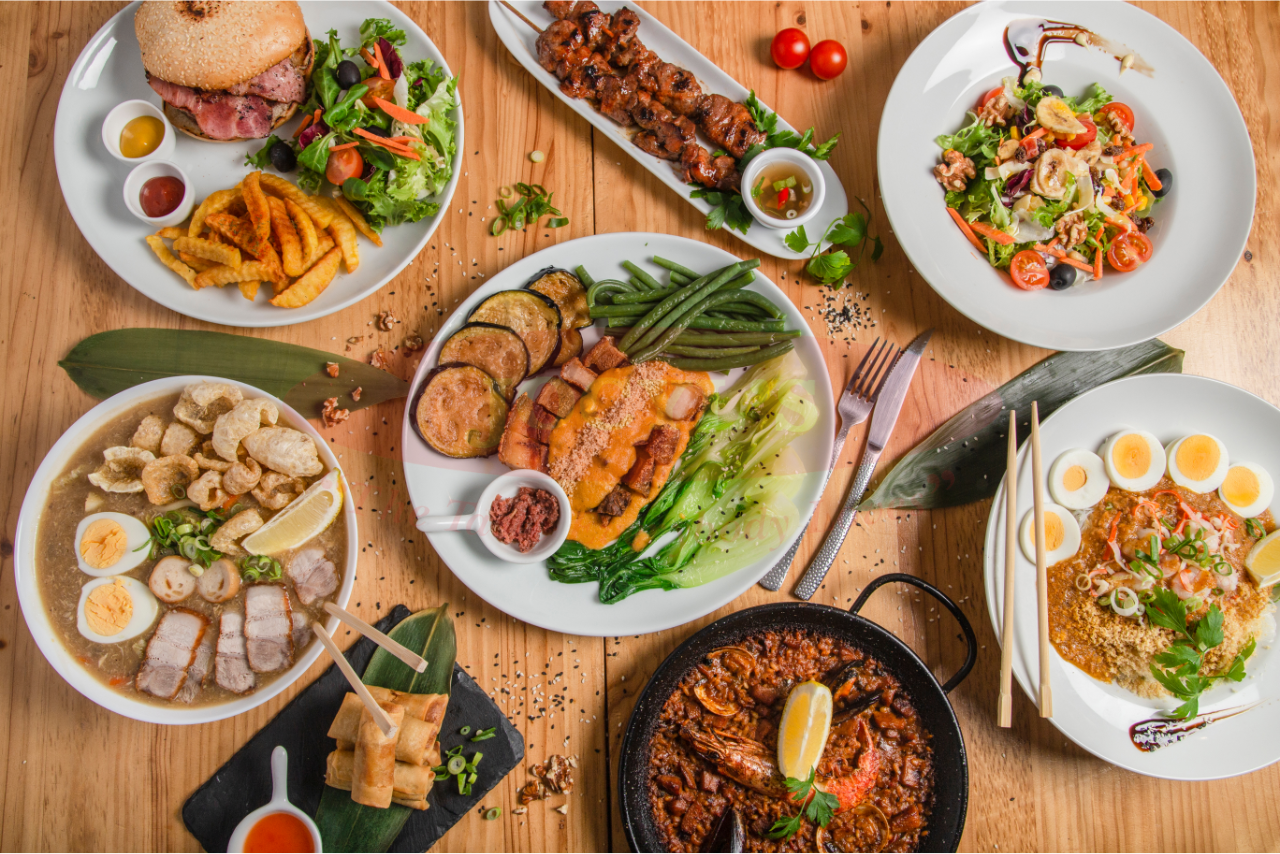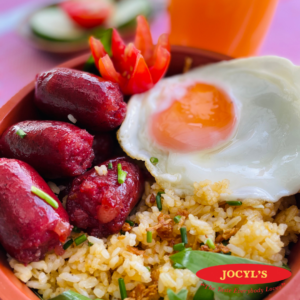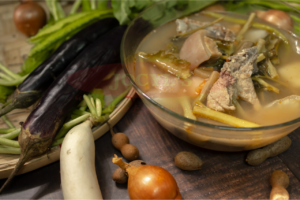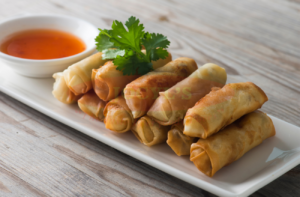
About Us
Jocyl's Food Products (a.k.a "Chorizo de Kalibo") is a bold and forward-thinking company whose goals are set to create surprising ways of developing and promoting our products. We are entrepreneurial and visionary in producing and marketing the best chorizo and other food products from our hometown - Kalibo, Aklan, Philippines.
About UsContact Info
- Tigayon Highway, Barangay Tigayon, Kalibo, Aklan
- +63362628688
- jocylsfoods@gmail.com
- Tigayon Highway, Barangay Tigayon, Kalibo, Aklan
- jocylsfoods@gmail.com
- +63362628688

The Ultimate Guide to Filipino Food: History, Culture, and Delicious Dishes
-
Jocyl's Food Products > Blog > Food > The Ultimate Guide to Filipino Food: History, Culture, and Delicious Dishes
The Ultimate Guide to Filipino Food: History, Culture, and Delicious Dishes
Filipino food is gaining popularity all over the world, and for a good reason. It is a unique blend of flavors and influences, reflecting the country’s rich history and diverse culture. From sweet and savory dishes to hearty stews and refreshing desserts, there is no shortage of delicious Filipino food to try.
In this ultimate guide to Filipino food, we will explore the history, culture, and most popular dishes of the Philippines. By the end of this article, you’ll have a deeper appreciation for this amazing cuisine and be inspired to try some of these mouthwatering dishes for yourself.
History of Filipino Food
Filipino cuisine is a result of centuries of colonization and trade. The Philippines has been ruled by several foreign powers throughout its history, including Spain, the United States, and Japan, all of which have left a mark on the country’s cuisine.
One of the most significant influences on Filipino food is the Spanish colonization that lasted for over 300 years. Spanish settlers introduced ingredients such as tomatoes, onions, garlic, and various spices, which are now staples in Filipino cooking. They also brought with them cooking techniques like sautéing and stewing, which are commonly used in Filipino dishes.
Another significant influence on Filipino food is the Chinese traders who have been visiting the Philippines for centuries. Chinese ingredients such as soy sauce, tofu, and noodles have been incorporated into many Filipino dishes. Chinese cooking techniques, such as stir-frying and steaming, are also prevalent in Filipino cuisine.
During World War II, the Philippines was occupied by Japan, which also had an impact on the country’s cuisine. Japanese ingredients such as tempura and sushi became popular among Filipinos, and some Japanese cooking techniques were adopted in Filipino cooking.
In recent years, the Philippines has also been influenced by other cultures, such as Korean and American cuisine. The result is a cuisine that is a fusion of different flavors and influences, yet still distinctively Filipino.
Culture and Customs of Filipino Food
Food plays a vital role in Filipino culture. It is a way of bringing people together, celebrating special occasions, and expressing love and care. Filipino hospitality is often expressed through sharing food with guests and making sure that they are well-fed and satisfied.
In Filipino households, it is common to have a large table full of dishes, often more than enough to feed everyone present. This tradition of abundant food is known as “tara na” in Filipino, which means “let’s eat.”
Another custom that is prevalent in Filipino culture is the “boodle fight.” This is a military-style way of eating where everyone eats together on a banana leaf, using their hands to scoop up food. It is a fun and communal way of sharing a meal, often done during special occasions or gatherings.
Popular Filipino Dishes
Now, let’s dive into some of the most popular Filipino dishes. Whether you’re a seasoned foodie or just starting to explore Filipino cuisine, these dishes are must-tries:
Adobo – Perhaps the most well-known Filipino dish, adobo is a stew made with meat (usually chicken or pork), vinegar, soy sauce, garlic, and bay leaves. It is savory, tangy, and pairs well with rice.
Sinigang – This sour soup is a staple in Filipino households. It is made with tamarind or other sour fruits, vegetables, and meat or seafood. It is often eaten with rice and can be customized to fit individual preferences.
Lechon – Lechon is a whole roasted pig that is often served during special occasions like weddings or fiestas. The skin is crispy, and the meat is tender and juicy.
Kare-Kare – This rich and savory stew is made with oxtail, peanut sauce, and vegetables. It is usually served with rice and shrimp paste on the side.
Pancit – Pancit is a stir-fried noodle dish that can be made with various meats and vegetables. It is often served during birthdays and other celebrations, symbolizing long life and good health.
Lumpia – Lumpia is a Filipino version of a spring roll. It can be filled with meat or vegetables and is often served as an appetizer or snack.
Halo-Halo – This refreshing dessert is a favorite among Filipinos. It is a shaved ice dessert with various sweet toppings such as fruit, jelly, and ice cream.
Sisig – is a dish made from parts of the pig’s head and liver, seasoned with vinegar, soy sauce, and calamansi juice. It is usually served on a sizzling plate and topped with egg and onions.
Kutsinta – is a type of Filipino steamed cake made from rice flour and brown sugar. It is usually served as a snack or dessert and is often topped with grated coconut.
Barbecue – Filipino barbecue is a popular street food made from marinated pork or chicken skewered and grilled over charcoal. It is often served with a sweet and savory sauce and can be eaten as a snack or with rice.
Tinolang Manok – is a chicken soup made with ginger, onions, and green papaya or chayote. It is a comforting and nourishing dish that is often served with rice.
Longganisa – Longganisa is a type of Filipino sausage that comes in different flavors, depending on the region. It is usually served for breakfast with garlic rice and a fried egg.
Tocino – is a sweet and savory cured meat that is usually made from pork. It is often served for breakfast with garlic rice and eggs.
Bistek Tagalog – is a beef dish made with thinly sliced beef, onions, and soy sauce. It is often served with rice and is a simple yet flavorful dish.
Caldereta – is a hearty stew made with beef or goat meat, potatoes, carrots, and tomato sauce. It is usually served with rice and is a popular dish during special occasions and gatherings.
These are just some of the many delicious Filipino dishes that you can try. Filipino cuisine is diverse, and there are many regional specialties that are worth exploring.
Tips for Cooking Filipino Food at Home
If you want to try cooking Filipino food at home, here are some tips to get you started:
- Stock up on essential Filipino ingredients such as soy sauce, vinegar, fish sauce, and coconut milk. You can find these ingredients at your local Asian grocery store or online.
- Invest in a good rice cooker. Rice is a staple in Filipino cuisine, and having a rice cooker makes it easy to cook rice perfectly every time.
- Experiment with different cuts of meat. Filipino cuisine uses a variety of meats, from chicken and pork to seafood and beef. Don’t be afraid to try new cuts or meats that you may not be familiar with.
- Don’t forget the condiments. Filipino cuisine often includes condiments such as shrimp paste, soy sauce, and vinegar to add flavor to dishes. Have these condiments on hand to enhance the taste of your Filipino dishes.
- Use traditional cooking techniques. Filipino cuisine often involves sautéing, stewing, and grilling. Be sure to use these techniques to achieve authentic flavors.
- Get creative with presentation. Filipino cuisine is known for its colorful and vibrant presentation. Experiment with different plating techniques to make your dishes look as good as they taste.
Conclusion
Filipino food is a cuisine that is rich in history, culture, and flavor. From savory stews to refreshing desserts, there is something for everyone in Filipino cuisine. This ultimate guide has explored the history and cultural significance of Filipino food and highlighted some of the most popular dishes. If you are interested in exploring this delicious cuisine further, follow our tips for cooking Filipino food at home and start experimenting with different ingredients and techniques. Tara na, let’s eat!
Jocyl’s Social Media:
https://www.facebook.com/jocylsfoods
https://www.instagram.com/jocylsfoods
https://www.twitter.com/jocylsfoods
https://www.pinterest.ph/jocylsfoods
https://www.tiktok.com/@jocylsfoodsproducts
#FilipinoFood #PinoyFood #FilipinoCuisine #PhilippinesFood #Foodie #FoodBlog #FoodCulture #FoodHistory #DeliciousDishes #CookingTips #Recipes #UltimateGuide
Recent Posts
- The Ultimate Guide to Authentic Filipino Breakfast: Why Chorizo de Kalibo Is Taking 2026 to the next level!
- Ultimate Aklan Pasalubong Guide: Authentic Filipino Treasures
- How to Cook Longganisa Without Oil: Easy, Healthy & Delicious Guide
- Ultimate Guide: How to Cook Ilonggo Longganisa – Perfect Every Time!
- What is Ilonggo Food? Discover the Rich Flavors of Western Visayas Cuisine
Recent Comments
Archives
- October 2025
- September 2025
- August 2025
- July 2025
- May 2025
- April 2025
- March 2025
- February 2025
- January 2025
- November 2024
- October 2024
- September 2024
- August 2024
- June 2024
- March 2024
- February 2024
- January 2024
- December 2023
- November 2023
- October 2023
- August 2023
- July 2023
- June 2023
- May 2023
- April 2023
- March 2023
- February 2023
Tags
- Aklan
- Aklan Pasalubong
- Boracay
- Boracay Food
- Boracay Island
- Boracay Pasalubong
- boracay snacks
- Boracay Souvenirs
- Breakfast
- Chicken
- chicken tocino
- Chori Burger
- chorizo
- ChorizoDeKalibo
- chorizo recipe
- Delicacies
- embutido
- embutido recipe
- Filipino Chorizo
- Filipino Cuisine
- filipino food
- Filipino Longganisa
- Filipino Sausage
- foodie guide
- homemade
- Iloilo
- Iloilo Chorizo
- Iloilo Food
- Iloilo Longganisa
- Iloilo Pasalubong
- ingredients
- JocylsFoods
- longaniza
- longganisa
- longganisa recipe
- meat
- Pasalubong
- pinoy recipes
- pork tocino
- recipe
- Recipes
- skinless longganisa
- snacks
- tocino
- tocino recipe








